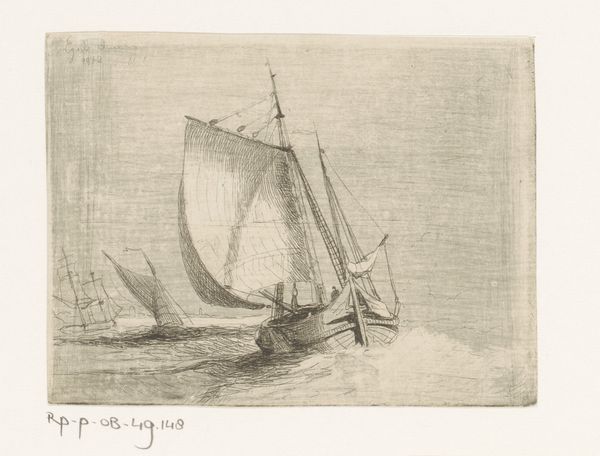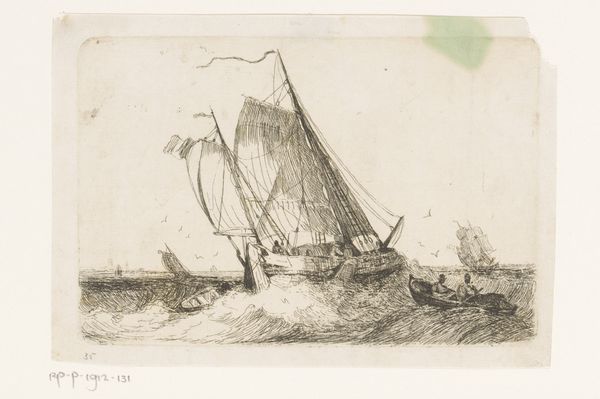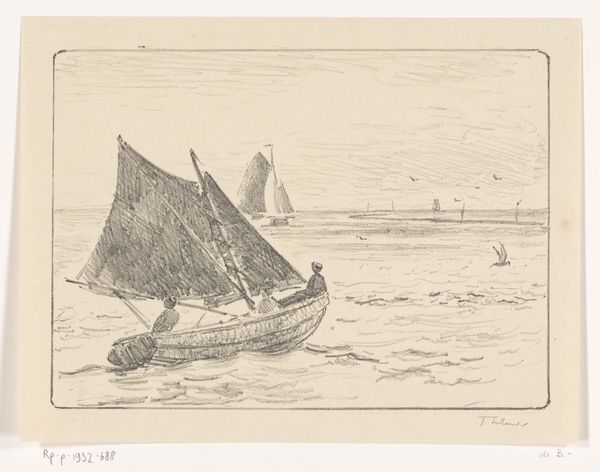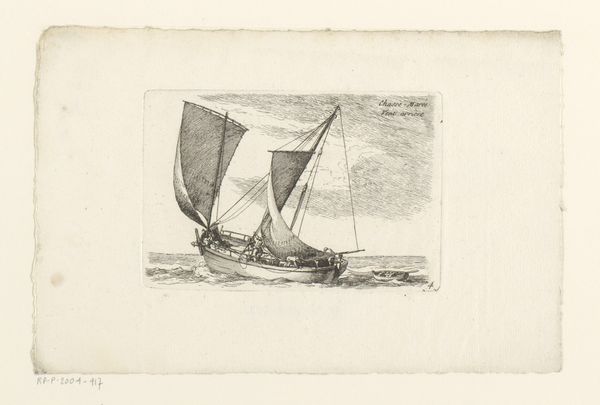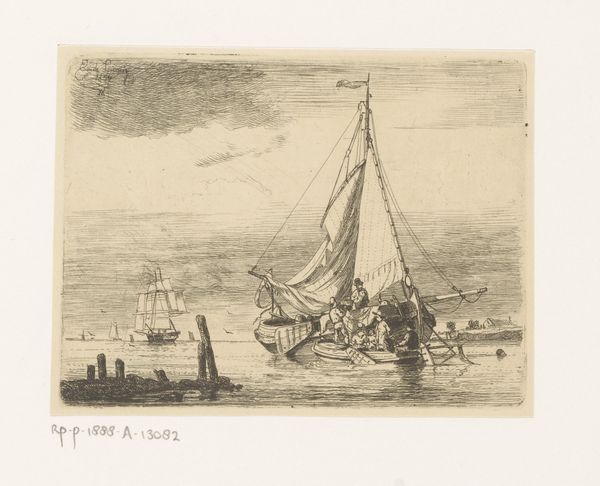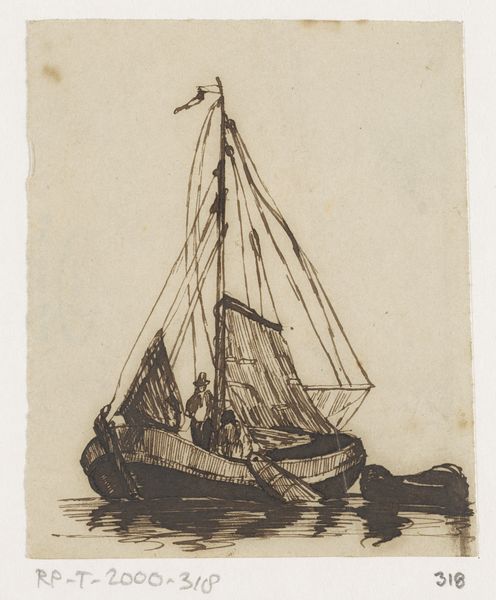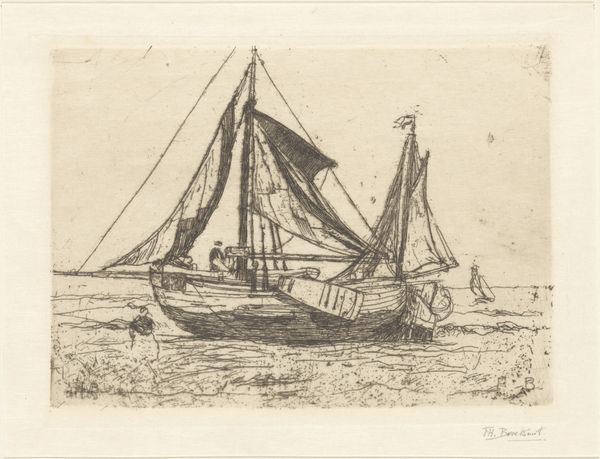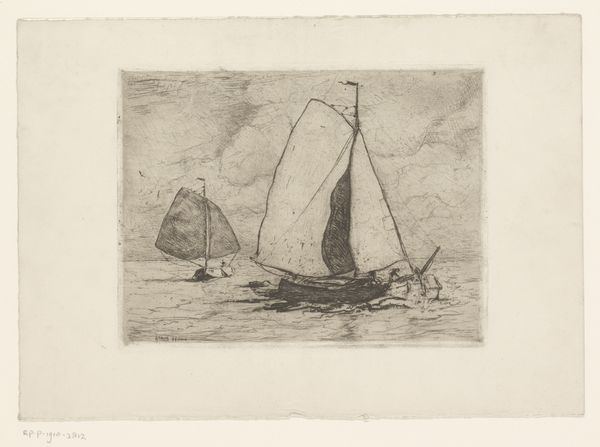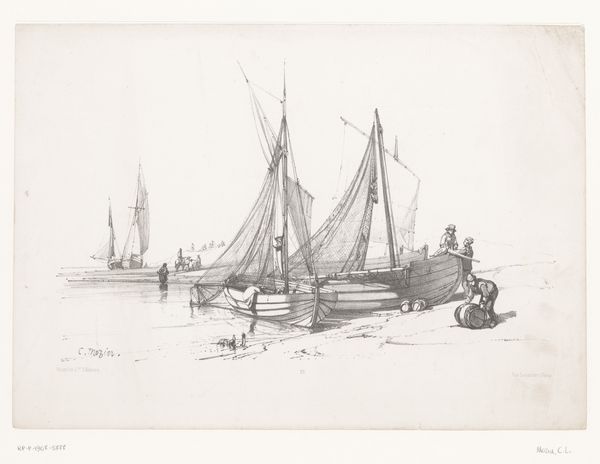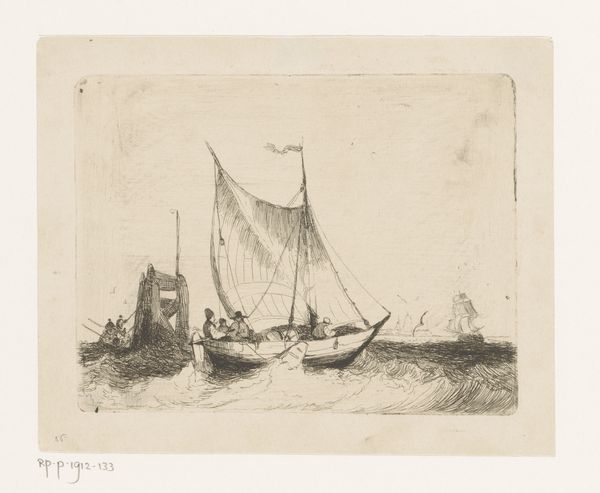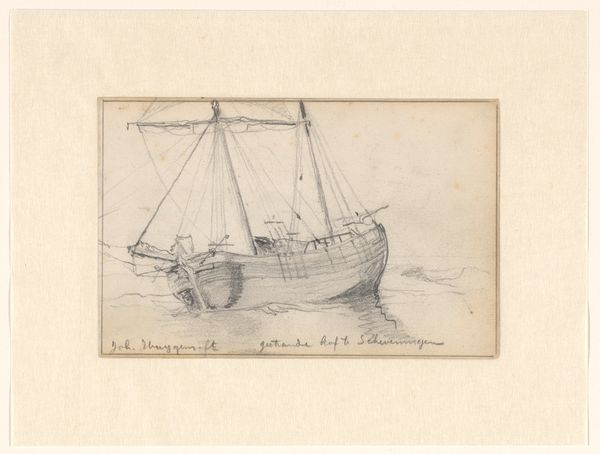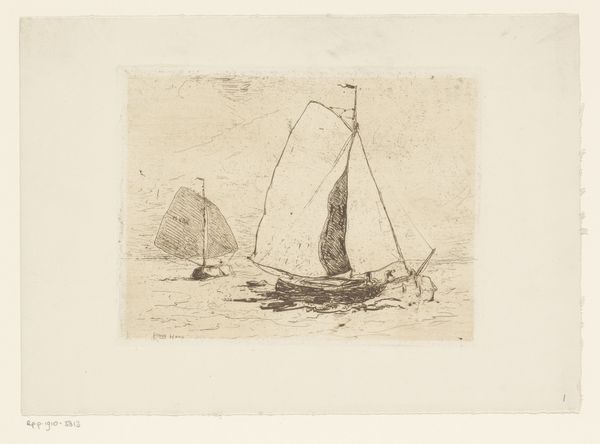
print, etching
#
ink drawing
#
ship
# print
#
etching
#
old engraving style
#
landscape
#
etching
#
romanticism
#
genre-painting
Dimensions: height 87 mm, width 131 mm
Copyright: Rijks Museum: Open Domain
Curator: Ah, yes. This is "Vissersboot uit Blankenberge op rollen," or "Fishing Boat from Blankenberge on Rollers," an etching by Egidius Linnig, likely created between 1831 and 1860. The print currently resides in the Rijksmuseum's collection. Editor: My first thought is that it captures a sense of quiet labor. There's a stillness, almost melancholic, conveyed in the scene despite the presence of human activity. The limited tonal range really adds to that subdued atmosphere. Curator: Indeed. Considering Linnig's oeuvre, it fits neatly into the genre scenes popular at the time, depicting everyday life along the Belgian coast. I'm drawn to how the etching technique itself mirrors the subject—the laborious process of printmaking reflecting the labor of the fishermen. Look at the varied line work used to render the texture of the boat's hull versus the delicate netting. Editor: It speaks to the lives of these working-class individuals. What were their stories, their struggles? The boat isn't just a boat; it represents their livelihood, their connection to the sea. I wonder what the rollers underneath the boat tell us about the local industry and technological innovation at the time. How does it affect working condition or gender roles of these workers, for example? Curator: It raises fascinating points about the industrial context, certainly. The rollers likely represent a system devised for easier launching or retrieval of the boat from the beach. It is fascinating to imagine the cooperative human element that enabled this fishing economy, and how it relates to distribution chains even today. Editor: Precisely! And to expand on the material reality: how accessible were these prints to the working class who may have directly worked on or owned similar boats? It speaks to questions of representation, class, and the commodification of labor. Curator: And perhaps also a romanticization of it, looking through a nostalgic lens from the burgeoning industrial revolution inland. The details in the rigging and hull construction speak to skilled craftsmanship, a mastery over materials gained through generations. We're presented with a certain idea of labor here, definitely not one that would be found in the city. Editor: So, by interrogating both the material processes and the historical and societal setting that underpinned its production, the artwork provokes conversations about work, capital, and representation of ordinary life. Curator: It makes me appreciate the craft of the etching and to ask ourselves, what's carried over from that old way of laboring, even to the work involved with the printing process itself? Editor: I agree. The piece encourages us to engage in that wider conversation about labor, technology, and our perception and valuation of each.
Comments
No comments
Be the first to comment and join the conversation on the ultimate creative platform.
